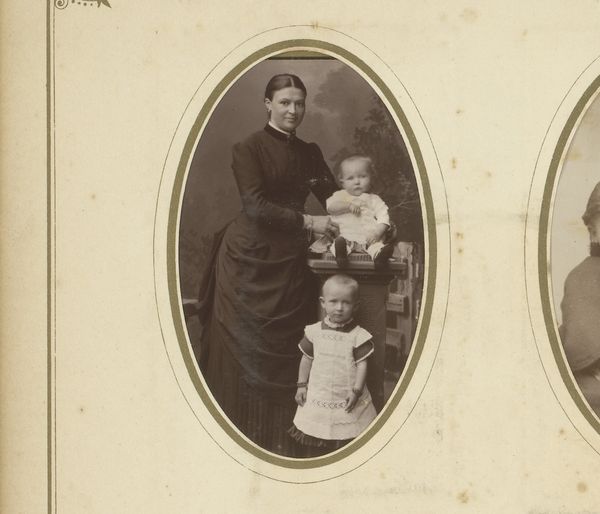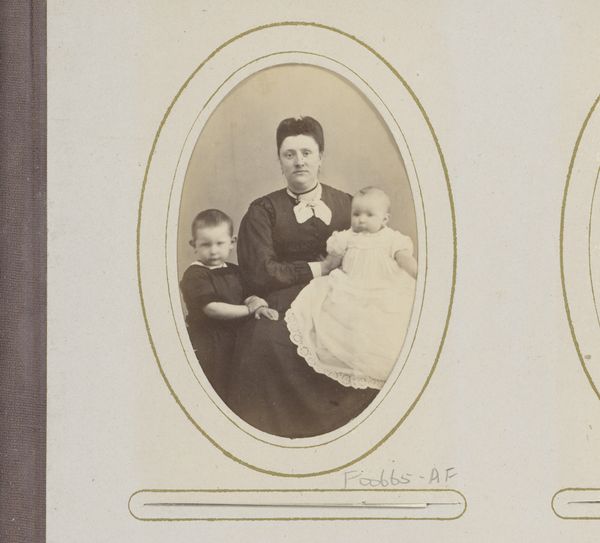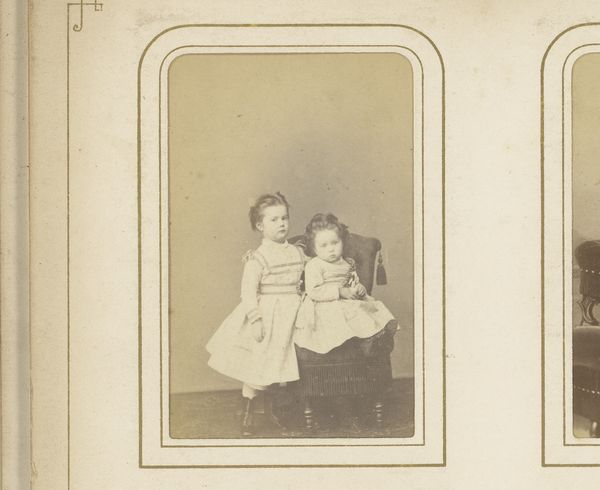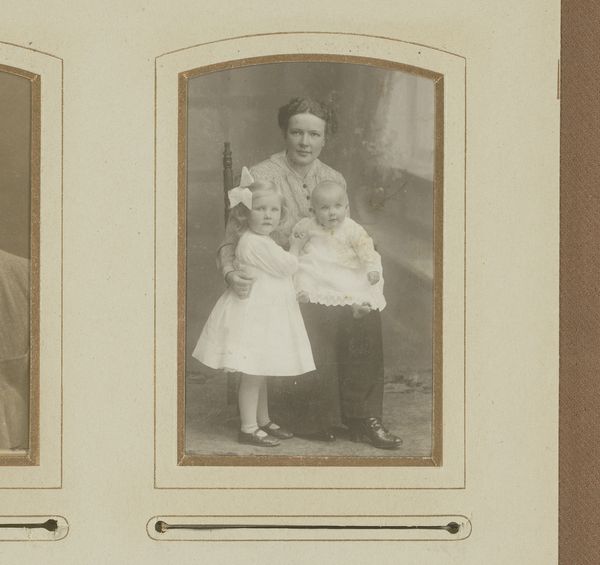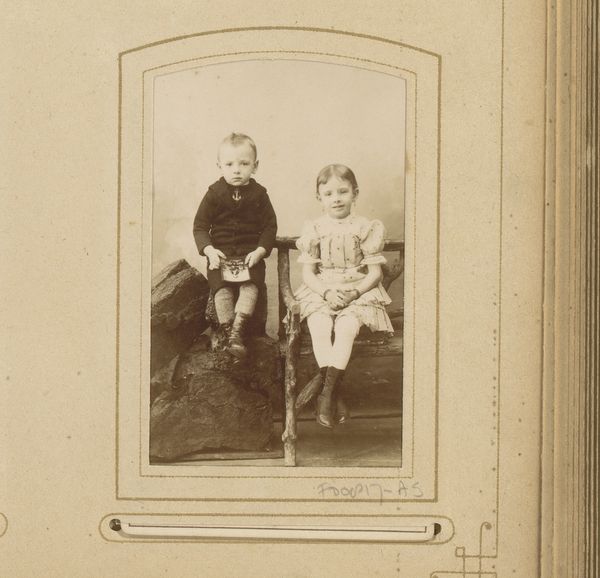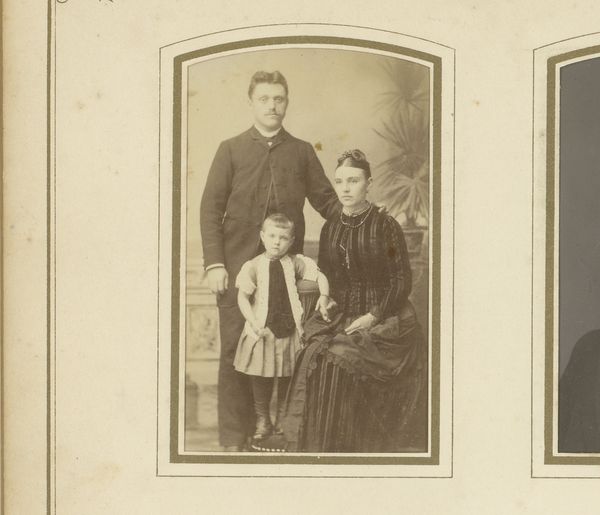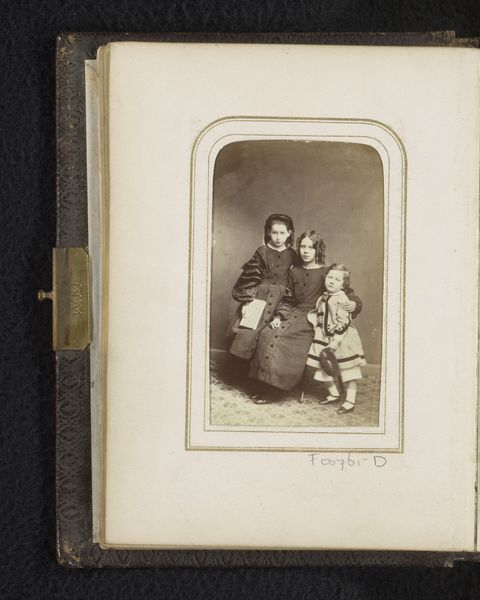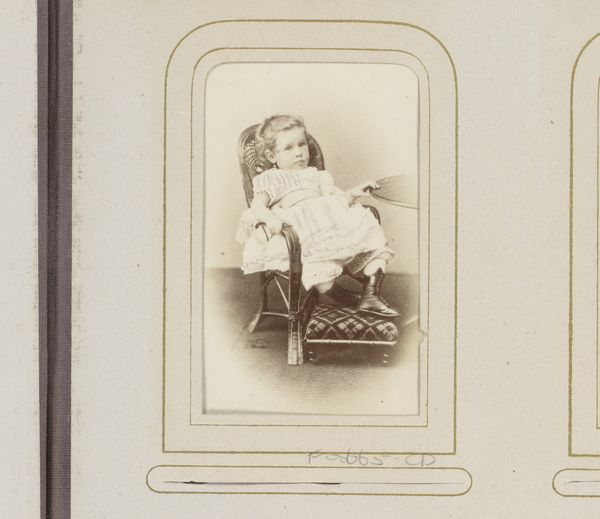
photography
#
portrait
#
photography
#
group-portraits
#
19th century
#
academic-art
Dimensions: height 81 mm, width 52 mm
Copyright: Rijks Museum: Open Domain
Curator: This photograph, entitled "Portret van een vrouw en twee meisjes," dates from somewhere between 1870 and 1900. It's a beautiful example of late 19th-century portrait photography. Editor: There’s such formality to it. Despite the charming details in the children’s attire, a slight somberness radiates from all three figures. The restricted tonal range adds to that serious effect. Curator: Right, and that gravity was very much a convention of portraiture at that time, especially when we consider the rise of photography and how people wanted to imitate painting techniques with this newer technology. It's interesting how they're positioned to maximize light. The background appears deliberately kept out of focus so that they’re the main subject. Editor: Absolutely, it pushes us to think about not only the aesthetic expectations of that era, but also about its social customs around family and representation. There's clearly an understanding on the family’s side of what proper portraiture meant—how to convey dignity and status. These studio portraits were social currency of sorts. Curator: Yes, and notice how the arrangement draws our attention to the clothing, indicating their wealth through elaborate frills. Observe that each garment and each gaze contributes to the photograph’s success as an intentional artifact of carefully considered status and belonging. Editor: Precisely. Also, what a poignant look at mother/daughter relationships! Look at the tight composition; the figures are practically merging with each other—offering a visual depiction of what female care might have looked like in this period, so staged but undeniably suggestive. The babies feel like possessions as well as objects of intense familial devotion. Curator: That push and pull makes for compelling viewing. The composition is deliberately stiff, yet hints at genuine, human connection come through regardless. The soft diffused light renders this complex picture all the more intriguing. Editor: Exactly! This gives insight into cultural performances in that particular era. Photography helped solidify many cultural assumptions while attempting, or perhaps accidentally, revealing a family’s complicated core. Curator: It offers us so many threads to explore, and reminds us of how potent even the most composed of images can be as historical artifacts and examples of a certain type of academic style. Editor: A very insightful glimpse into the cultural conventions of a past time.
Comments
No comments
Be the first to comment and join the conversation on the ultimate creative platform.
